
1952
SUPER ATOM
After the instant success of PUMA’s first football boot, the ATOM, which was worn by many players, the launch of PUMA’s SUPER ATOM in 1952 creates a stir. Rudolf Dassler collaborates with experts, such as West Germany’s national coach Sepp Herberger to develop the world’s first boot with screw-in studs. In addition to the successful product launch, this marks the beginning of PUMA’s football heritage
THE ATTRIBUTES OF A PUMA
“With the speed, agility & spirit of a puma, my PUMA shoes inspire athletes in competition and empower them to victory.”
Why is PUMA called PUMA? Helmut Fischer explains why Rudolf Dassler decided to change his company’s name a few months after its foundation.
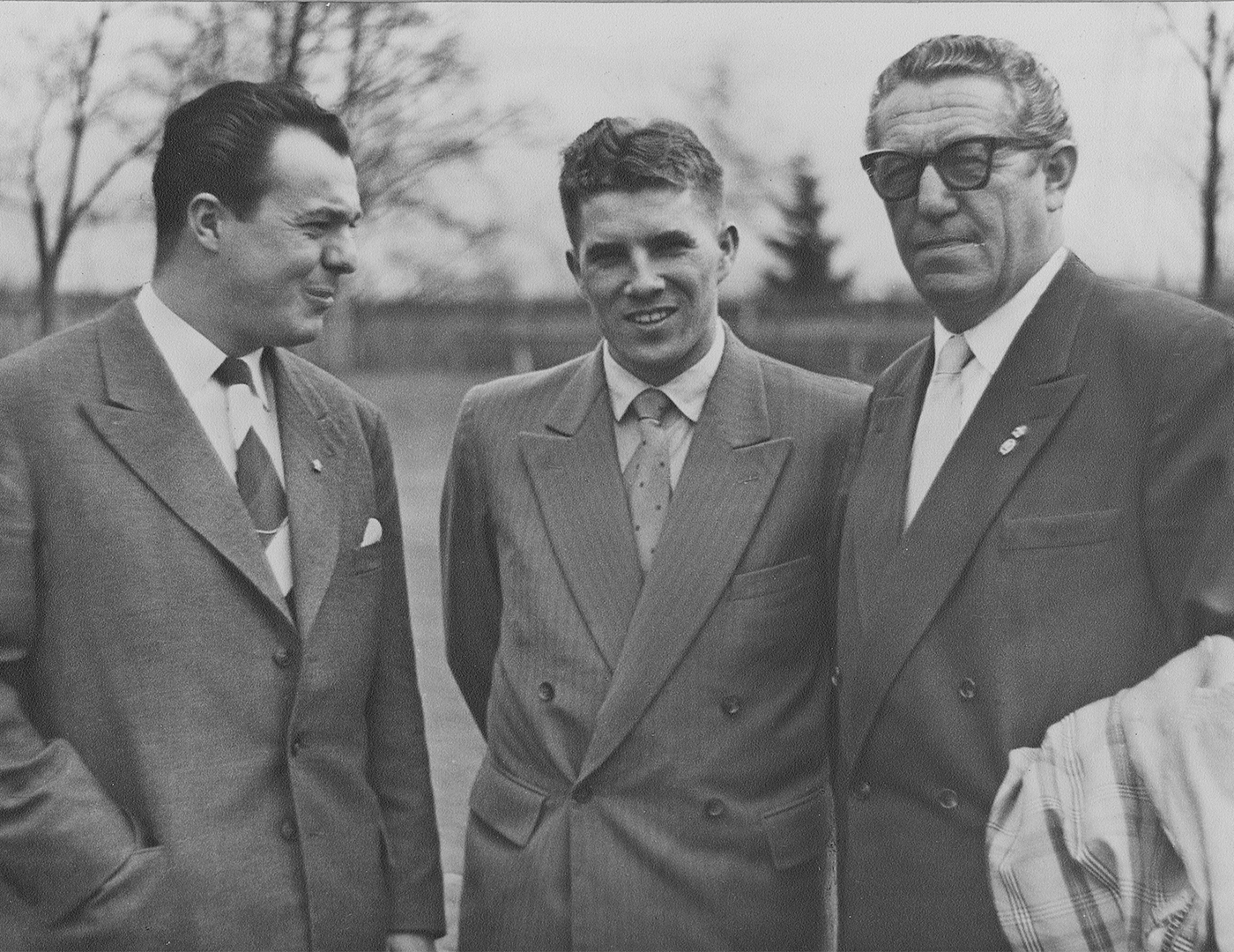
RUDOLF DASSLER – THE FOUNDING FATHER
Athlete, entrepreneur, visionary – Rudolf Dassler, together with his brother Adolf, founded the “Gebrüder Dassler Schuhfabrik” and thus laid the foundations for the sports shoe industry. In the mid-twenties, the clever businessman Rudolf developed the concept of specialized sports shoes. Thanks to his numerous contacts to sports associations, athletes and clubs, he brought the family business to world fame.
He lived for sports and participated in competitions until old age. His second passion was innovation, which repeatedly pushed PUMA to develop groundbreaking products.
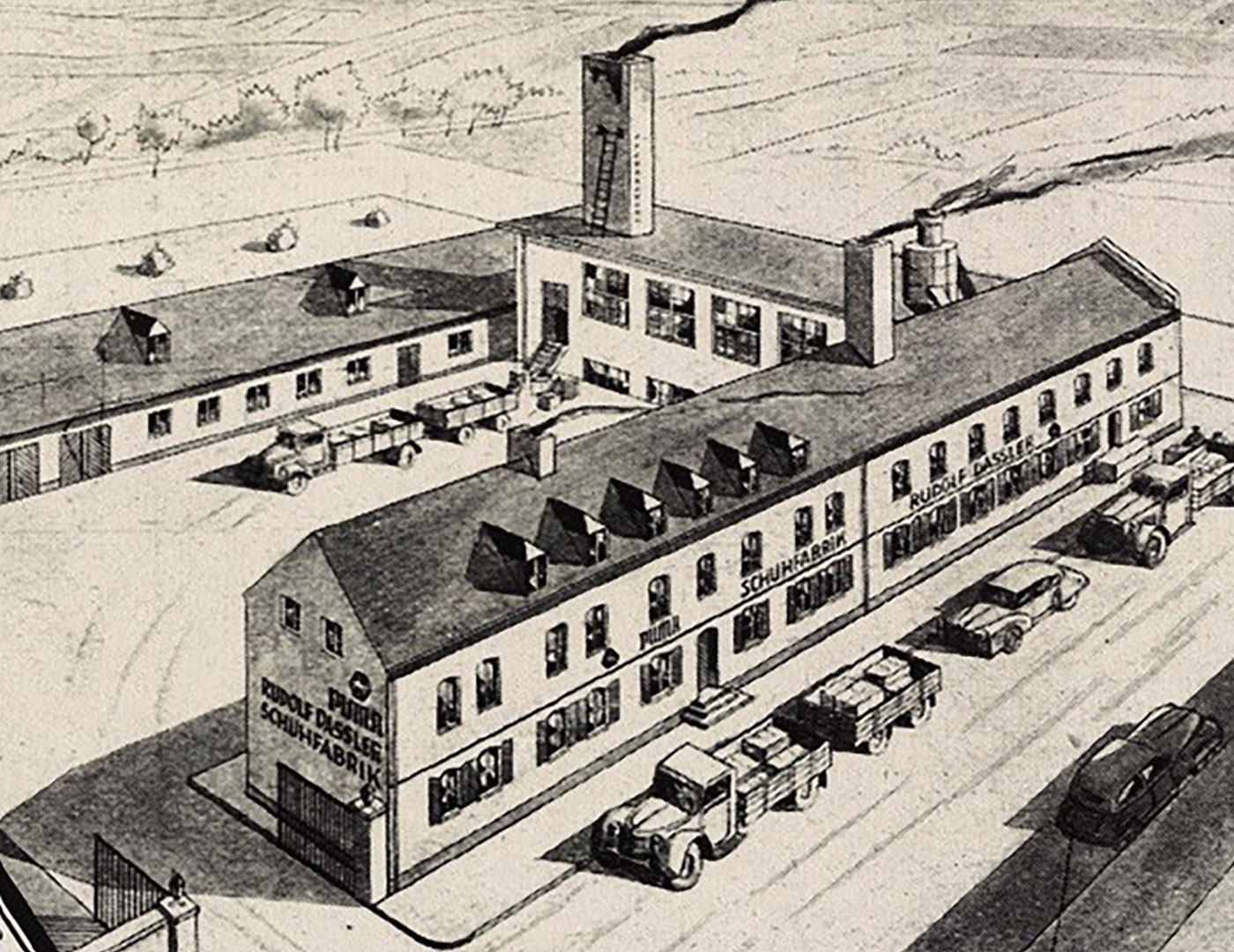
1948
NEW BEGINNINGS
After almost 25 years of “Gebrüder Dassler Schuhfabrik” (Dassler Brothers Shoe Factory), which had been a pioneer of the sports shoes industry, the Dassler brothers separated over an argument in late 1947. Rudolf Dassler left the family enterprise with 13 employees, founding the Schuhfabrik Rudolf Dassler.
He took over an old common storage facility, transforming it into a factory. From there, he registered his company on July 1st, 1948 and soon celebrated his first success.

PUMA CONQUERS THE WORLD
From the early years on, Rudolf Dassler establishes an export strategy, aiming to distribute his PUMA products abroad, thus making PUMA a global brand. In the fifties, he develops the slogan „PUMA in allen 5 Erdteilen“ (PUMA on all 5 continents), which will be printed on each shoe box and advertisement. Later this slogan is replaced by “PUMA macht’s mit Qualität”. (PUMA does it with quality).
THE WHITE LIGHTNING
In 1952 the young brand PUMA signs its first world-class athlete – Heinz Fütterer, also known as “the white lightning”. In Japan, 1954, he beats Jesse Owens’ world record from 1936 in his PUMA spikes. With a time of 10.2 seconds in the 100 meters, he becomes the world’s fastest man. It’s the first world record for PUMA.
The late Heinz Fütterer shared memories of that time during his visit to the PUMA Archive.
1958
THE PUMA FORMSTRIP
Just a year later, the second brand logo is registered: the so-called Formstrip, originally created to stabilize the foot inside the shoe, is now a typical PUMA trademark found on almost all PUMA shoes and is used as a design element on our apparel products.
Helmut Fischer explains how a simple white stripe became an unmistakable brand asset.
1968
ON NEW TRACKS
With the SACRAMENTO brush spike, PUMA leads numerous American athletes to victory. The innovative brush soles have 68 small, brush-like bristles in the front area of the foot. Just a few weeks prior to the games in Mexico, new world records are set by the athletes sporting them. A short-lived triumph, as the shoe is deemed too dangerous and banned by the International Association of Athletics Federation IAAF.
Helmut Fischer speaks about this groundbreaking innovation in track and field and its controversial ban.
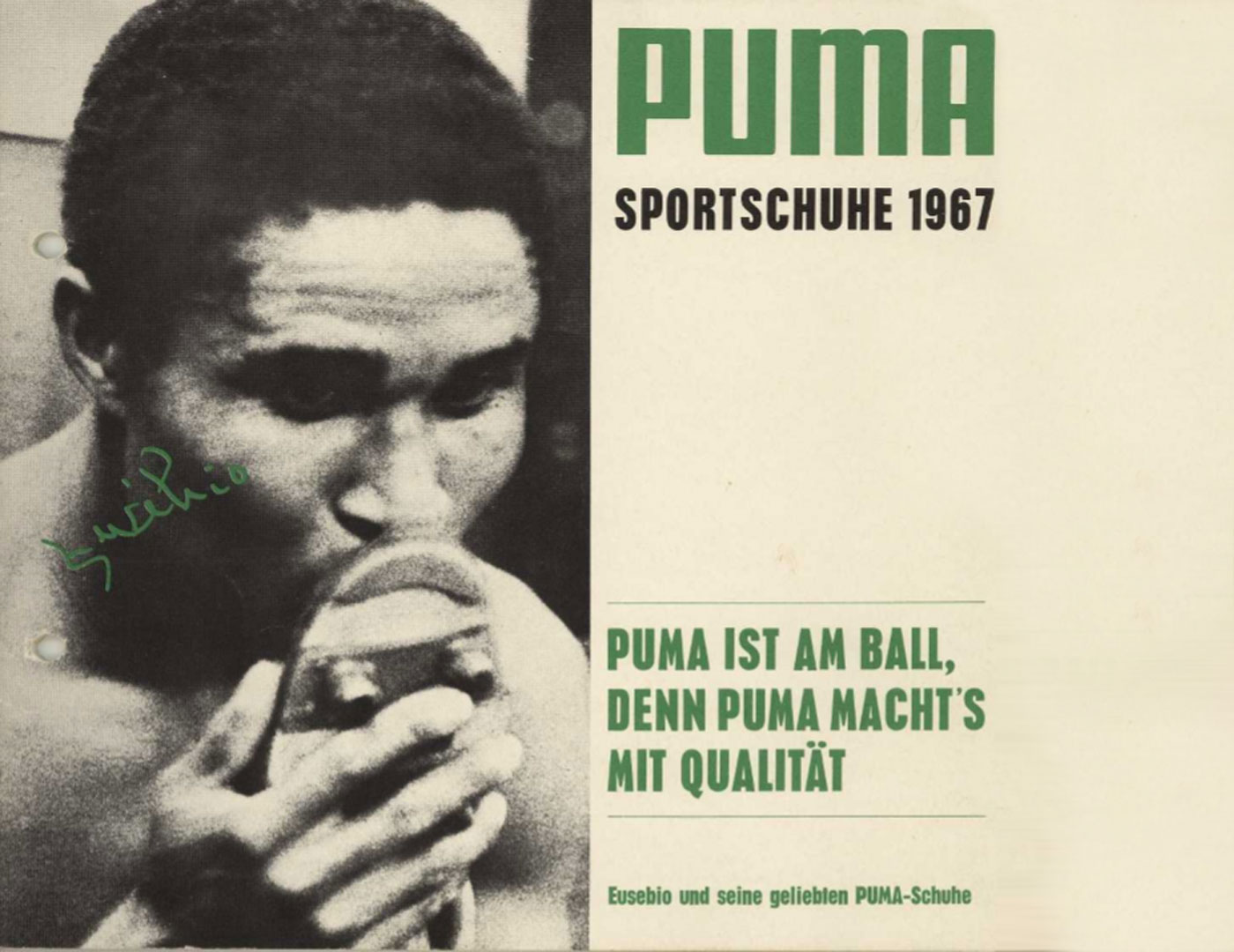
EUSÉBIO IS ON THE BALL WITH PUMA
Portuguese striker sensation Eusébio achieves top scorer title of the 1966 World Cup in England while wearing PUMA football boots.
Nicknamed “The Black Panther”, Eusébio made football history as one of the most prolific strikers.
1968
A SILENT GESTURE
1968, Olympic Games in Mexico City – The Olympic protest writes sports history.
PUMA athlete Tommie Smith wins gold in the 200m and causes a stir: he and his teammate John Carlos (bronze) raise their fists wearing black gloves, protesting against discrimination of African Americans and other minorities in the USA, apartheid, and racism.
50 years later, Tommie Smith is honored for his courage with the Dresden Peace Prize and takes the time to tell his story during a visit to the PUMA Archive.
1960
ARMIN HARY – IN PUMA SPIKES TO VICTORY
In 1960 Armin Hary was the first sprinter ever to run the 100 meters in exactly 10.0 seconds. Despite having always competed in a competitor’s spikes, he decides to run the Olympic Games final in Rome with PUMA spikes and wins gold.
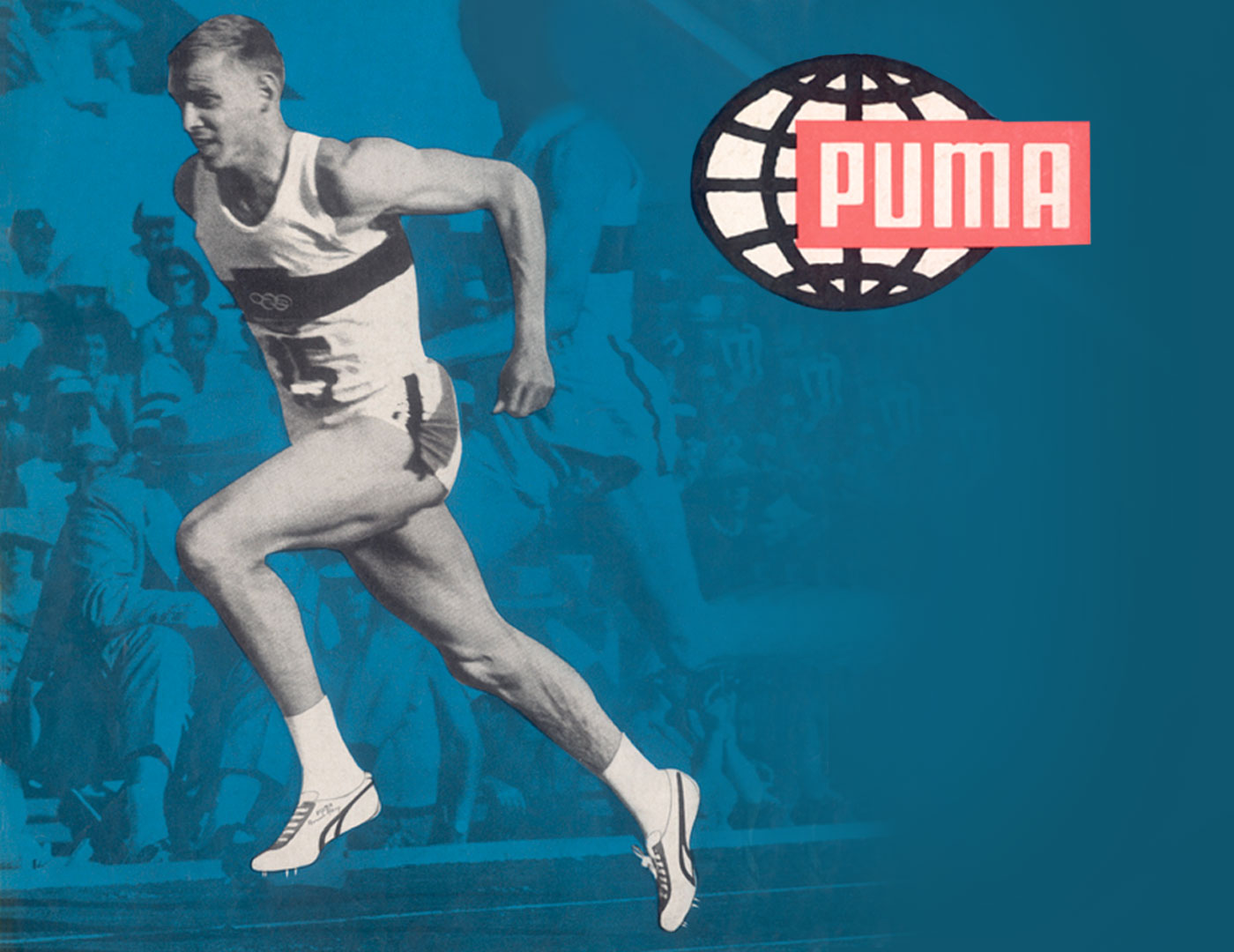
1968
THE BIRTH OF AN ICON
Over the past 50 years, the PUMA SUEDE has become a timeless classic. There are as many stories to be told about it as colorways exist.
Helmut Fischer explains how a suede leather shoe became a symbol of street style and which role an upcoming drug played in its history.

1968
PUMA LAUNCHES FIRST APPAREL LINE
In 1968, Rudolf Dassler starts the production of apparel to complement the brand’s shoes, aiming to increase both PUMA’s sales and visibility. Rudolf Dassler developed the idea of tracksuits in 1967, wanting to equip the athletes from head to toe in PUMA.
The first piece of apparel is the famous “T7 jacket”, a tracksuit jacket with a seven cm PUMA Formstrip on the sleeves. It quickly becomes as popular on the city streets as it was on the training grounds. Borussia Mönchengladbach’s star player Günther Netzer is one of the first athletes to advertise the new product line.

1968
A FIRST LEAP
The cat as we know it today takes a leap in 1968. German cartoonist Lutz Backes from Nuremberg creates our memorable trademark that will become one of the most famous trademarks worldwide. Reflecting that, the PUMA product range is extended to also include sportswear, and the logo begins to appear more frequently on PUMA products such as performance apparel and bags.
1973
ICONIC STYLE
Basketball’s Walt “Clyde” Frazier makes a name for himself on the court by stealing the ball from his opponents. Off the court, he is renowned for his colorful fashion style. So, when he asked for a custom-made pair of SUEDEs, we were game.
NBA legend and „father of coolness“ Clyde visited the PUMA Archive and gave some insights into his incredible career.
1979
PRESENTING No.1
The world famous „No.1 Logo” gets in position: The puma takes its leap across the upper right corner of the word mark. Only minor changes have been made over the years: the eye and nuzzle are gone and the ears are more pronounced today.


A CAT ON THE COURT
PUMA tennis shoes are Guillermo Vilas’s constant companion on his winning streak around the world. He wins the French, the US and the Australian Open, proving that PUMA has established its reputation as a supplier of the global tennis elite.
Vilas’ tennis shoes are the first PUMA shoes ever made with the so-called “California Technique”. The whole shoe consists of only two parts, the upper part and the sole, which is splashed on to the upper part.

1970
FIT FOR A KING
With the PUMA KING from 1970, we created another revolutionary product. Its flat structure made it lighter, while kangaroo leather is used for the very first time in order to increase softness and comfort.
With the special edition PELÉ KING, PUMA introduces the first colored football boot. Brazilian superstar Pélé plays a couple of matches with a yellow Formstrip on his boot.
1970
THE KING WEARS PUMA
In 1962 PUMA lands a coup, signing the world‘s biggest football star Pélé.
In 1970, Pelé is crowned “Player of the Tournament” while wearing PUMA KING boots. For him and the Brazilian team, it’s the country’s third World Cup title. Thirty years after this triumph, Pelé is officially honored as “Football Player of the Century”. No wonder – nothing could kick him out of his boots.

“ONLY TWO STRIPES PLEASE”
Germany, World Cup 1974 – All Dutch national team players enter the pitch with orange jerseys featuring three stripes – all but one: Team captain and superstar Johan Cruyff. Loyal to the PUMA brand, he wears a very special jersey during the tournament and dominates the game.
Helmut Fischer tells the story of the rebellious Dutchman.
BORUSSIA MÖNCHENGLADBACH
In the 1967/68 season, PUMA equips Borussia Mönchengladbach for the first time. At that time, Borussia is the most coveted team in the Bundesliga.
This marks the beginning of a long and successful history, lasting until 1992: eight title wins, including five German championships, two UEFA Cup wins and a victory in the DFB Cup.
Under the motto “#GladToBeBack” PUMA and Borussia Mönchengladbach revive their partnership in 2017.
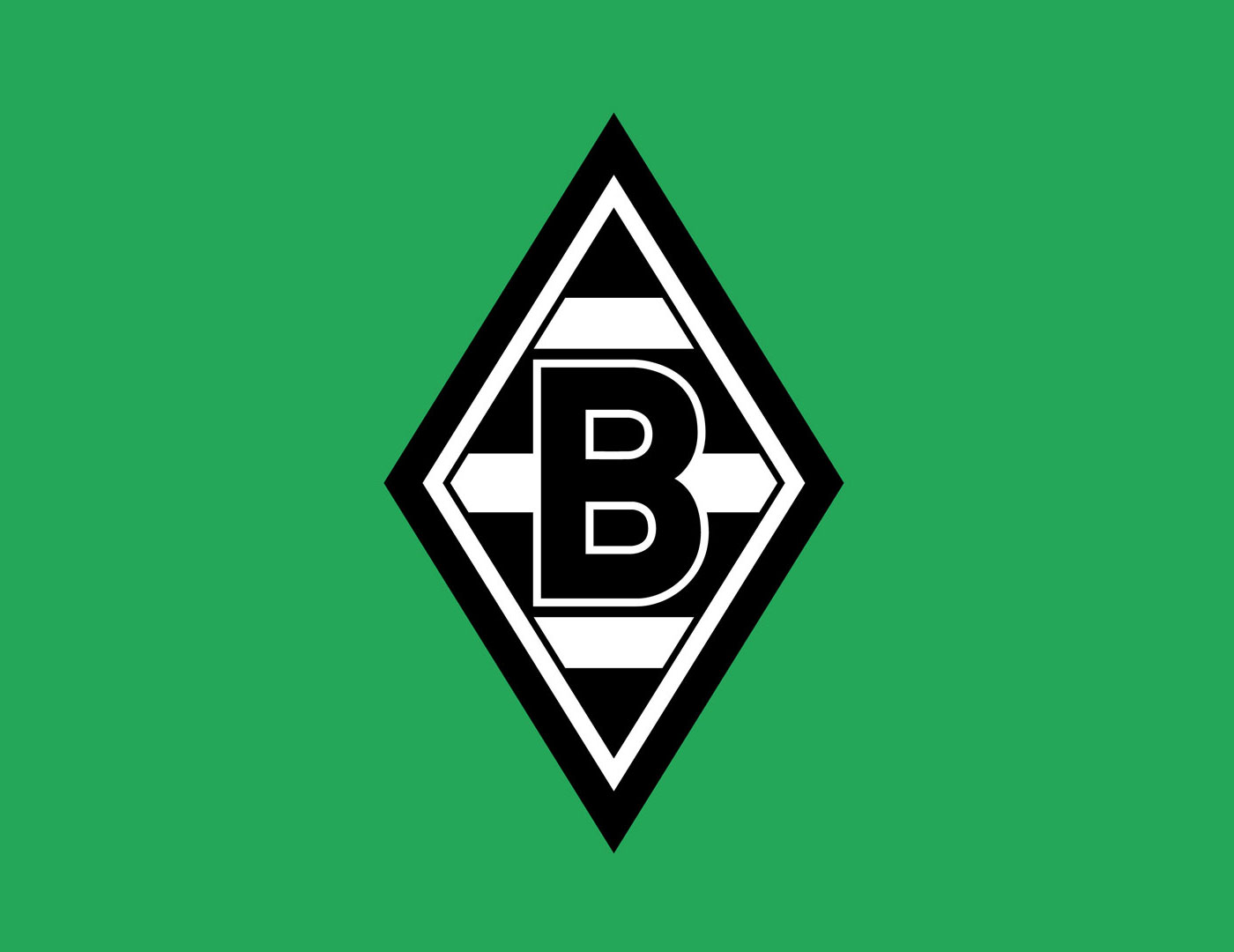
1984
Martina Navrátilová
Six Grand Slam victories in a row, nine Wimbledon victories, seven times WTA Player of the Year – Martina Navrátilová is one of the most successful tennis players of all time. Sponsored by PUMA between 1984 and 1987, she played all her matches with PUMA apparel, shoes and rackets.
Thanks to Navrátilová, Guillermo Vilas and Boris Becker, PUMA became one of the most sought-after tennis brands in the eighties.

1985
GLOBAL LEADER WITH JUST ONE RACKET
Boris Becker’s sensational victory in Wimbledon 1985 not only makes a superstar out of Becker overnight. His sponsor PUMA is now a global player in the tennis category.
With his VILAS racket, Boris celebrates one victory after another. Its technology is ingenious: the length of the grip is adjustable. A clear advantage for Boris’ service. PUMA becomes the global leader for tennis rackets with just one model and dominates tennis courts all over the world for years to come.

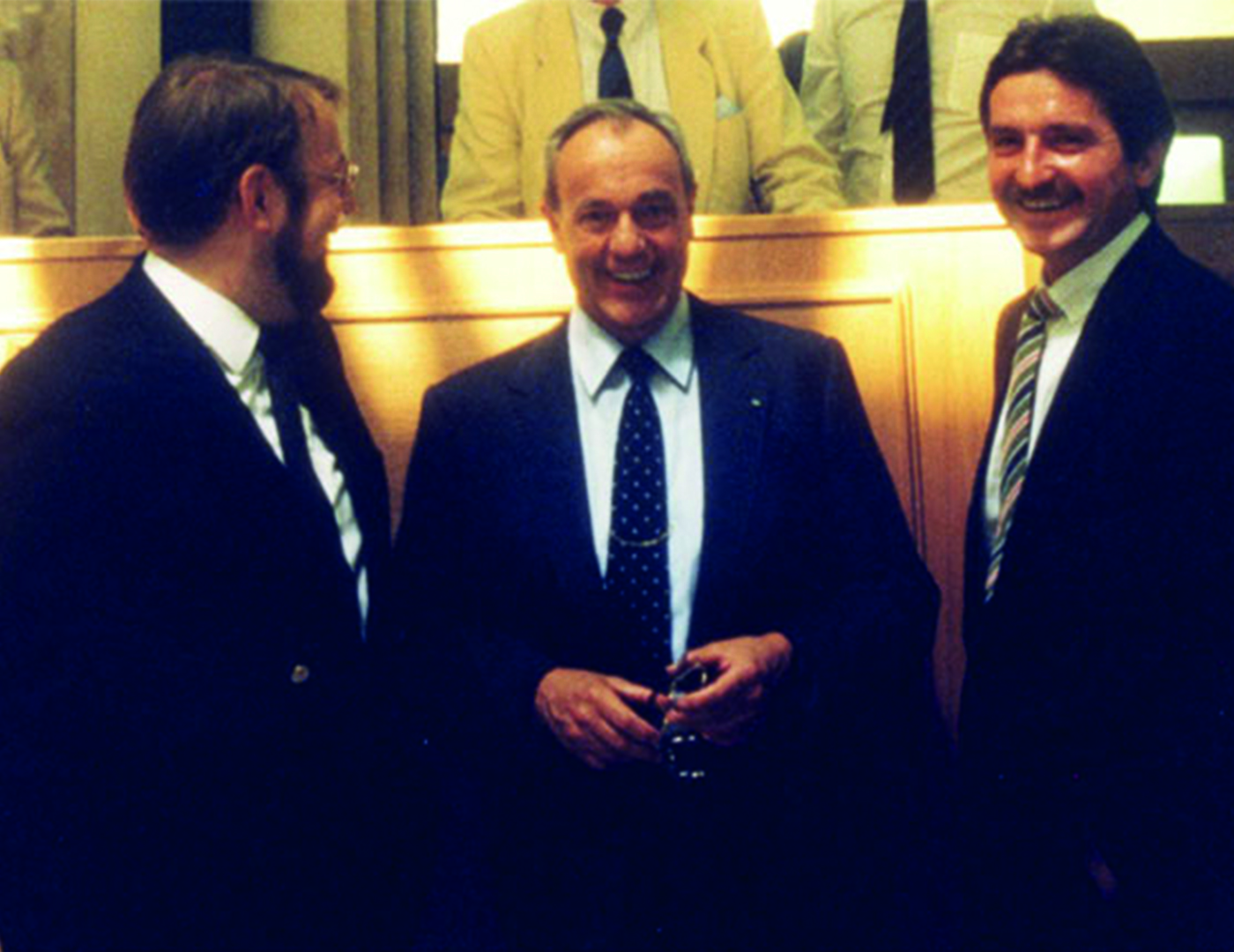
1986
SUCCESS IN STOCK
The company goes public as PUMA AG and the PUMA stock is traded on the Munich and Frankfurt stock exchanges. Armin Dassler, PUMA-CEO and son of the company founder Rudolf Dassler, celebrates this moment with his colleagues from the PUMA board.
1982
THE GOLDEN BOY
In the world of football, one player dominates the headlines in the eighties: Diego Armando Maradona. Without any doubt, the Argentinean is one of the most talented players of all time, but also one of the most polarizing ones.
Helmut Fischer speaks about Diego’s initial success and his time with PUMA.
1986
THE WORLD’S FIRST COMPUTER SHOE
Back in 1986, when technology was just entering daily life, PUMA set a new pace in running performance by creating the first wearable sports product. With the RS-Computer, runners could track the distances they were running and calories they were burning, transferring the data to their computer with a diskette.
Helmut Fischer explains why this pioneer shoe was a success in the US, but had some difficulties in Germany.
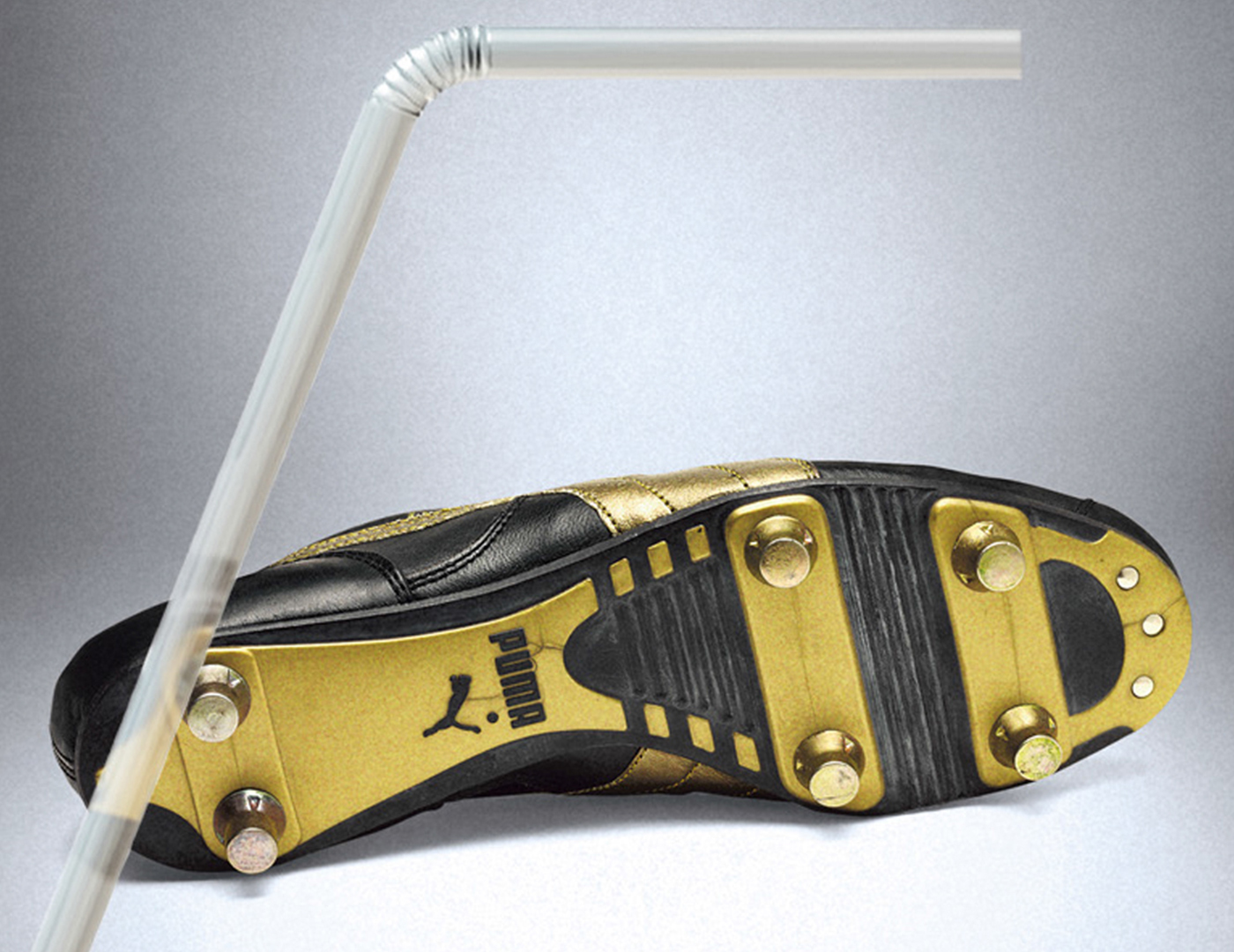
1982
THE STRAW THAT REVOLUTIONIZED FOOTBALL
Armin Dassler, the son of company founder Rudolf Dassler and then CEO, takes inspiration from a bendy straw to invent the TORERO DUOFLEX SOLE. This revolutionary technology makes a player like Diego Maradona even more nimble, paving the way for molded flex zones that are still in wide use today.
1985
BUM BUM BORIS
The 80’s are dominated by the tennis boom, triggered by the then 17-year-old Boris Becker and his spectacular victory in Wimbledon in 1985.
In charge of young Boris at that time, Helmut Fischer shares his memories of the young tennis star.
THE WORLD FOOTBALLER FROM HERZOGENAURACH
When Lothar Matthäus first took to the football pitch, it was with 1. FC Herzogenaurach, a club in his home town of Herzogenaurach, which was sponsored by PUMA.
From there, he embarks on a great football career: German Champion, European Champion, World Champion and World Football Player – the national record holder has reached all possible footballing goals. All the while, he never forgot his roots.
Helmut Fischer has known Lothar since he was a kid and they have been friends since then. During his visit to the PUMA Archive, Matthäus opens up about the debut of his impressive career.

1998
THE WORLD’S FIRST SPORT LIFESTYLE SHOE
As the first sports brand, PUMA merges sports and fashion by cooperating with star designer Jil Sander. The result of this collaboration is the world’s first sport lifestyle shoe. It combines two PUMA icons, giving them a fashionable twist: the football boot KING and running shoe EASY RIDER.
The shoe is an instant success and sets the trend for sport lifestyle footwear.
TURN IT ON
Faster lacing on faster shoes. PUMA launches the game-changing PUMA Disc technology on our TRINOMIC running shoe.
Helmut Fischer explains how ground-breaking this innovation was.
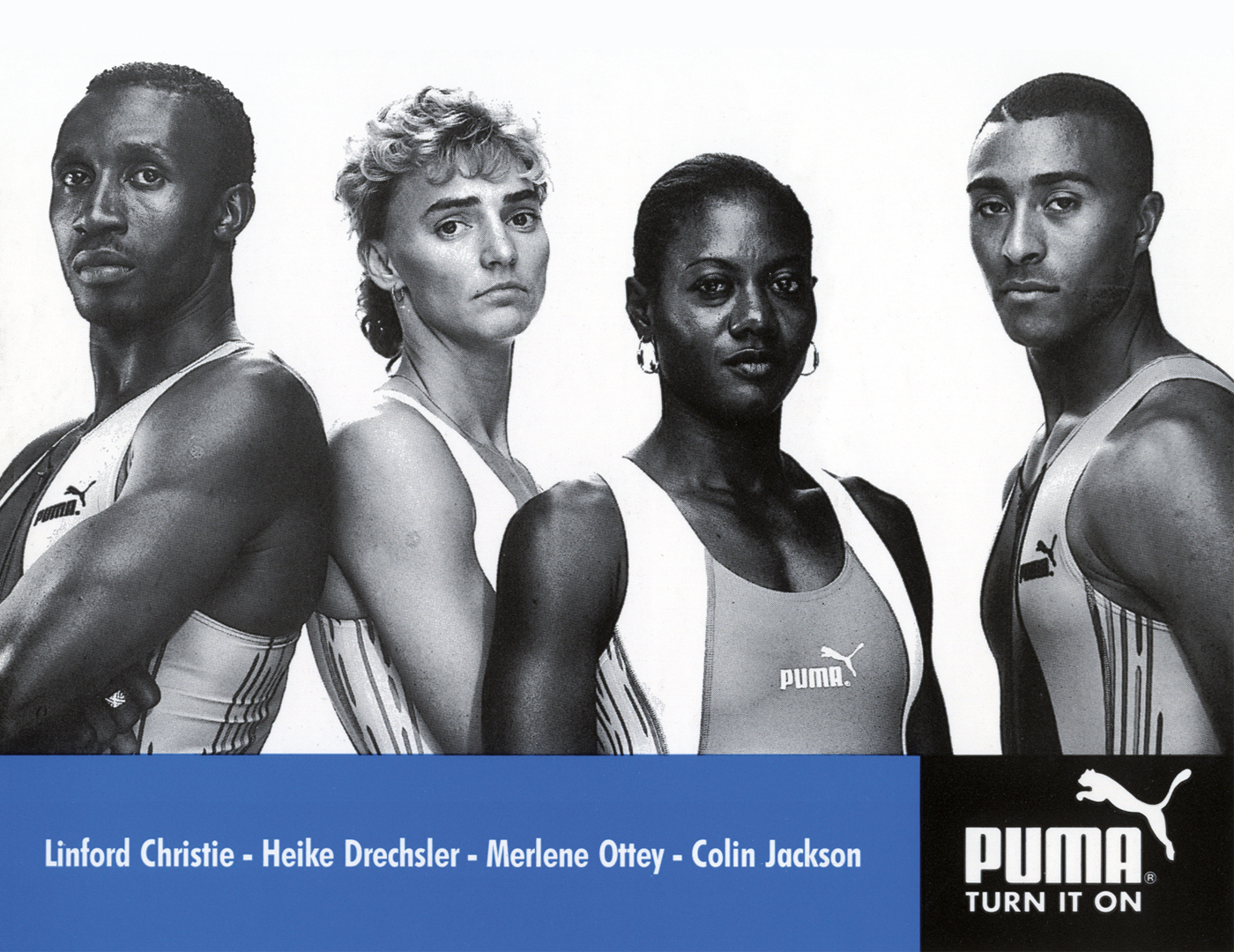
1993
FANTASTIC 4
At the Track and Field World Championships in Stuttgart, Germany’s Heike Drechsler, Jamaica’s Merlene Ottey, Linford Christie and Colin Jackson (both UK) – PUMA’s Fantastic Four – all win gold medals.

1993
DETERMINDED CONFIDENCE
Jochen Zeitz is appointed CEO at the age of 30, becoming the youngest chairman in German history to head a public company. Zeitz spearheads the restructuring of PUMA, in financial difficulties at the time, and manages to turn it from a low-price brand into the premium sport lifestyle company and one of the top three brands in the sporting goods industry it is today.
1996
EYES OF A CAT
Linford Christie proves that he’s a true PUMA athlete at a press conference prior to the Olympic Games in Atlanta. He appears wearing contact lenses that overlay his pupils with the PUMA cat, displaying his spirit for all to see. Our contact lens campaign later becomes a symbol for innovative marketing, not only in the sports industry but far beyond.
During his visit to the PUMA Archive, Christie looks back to this very special action.
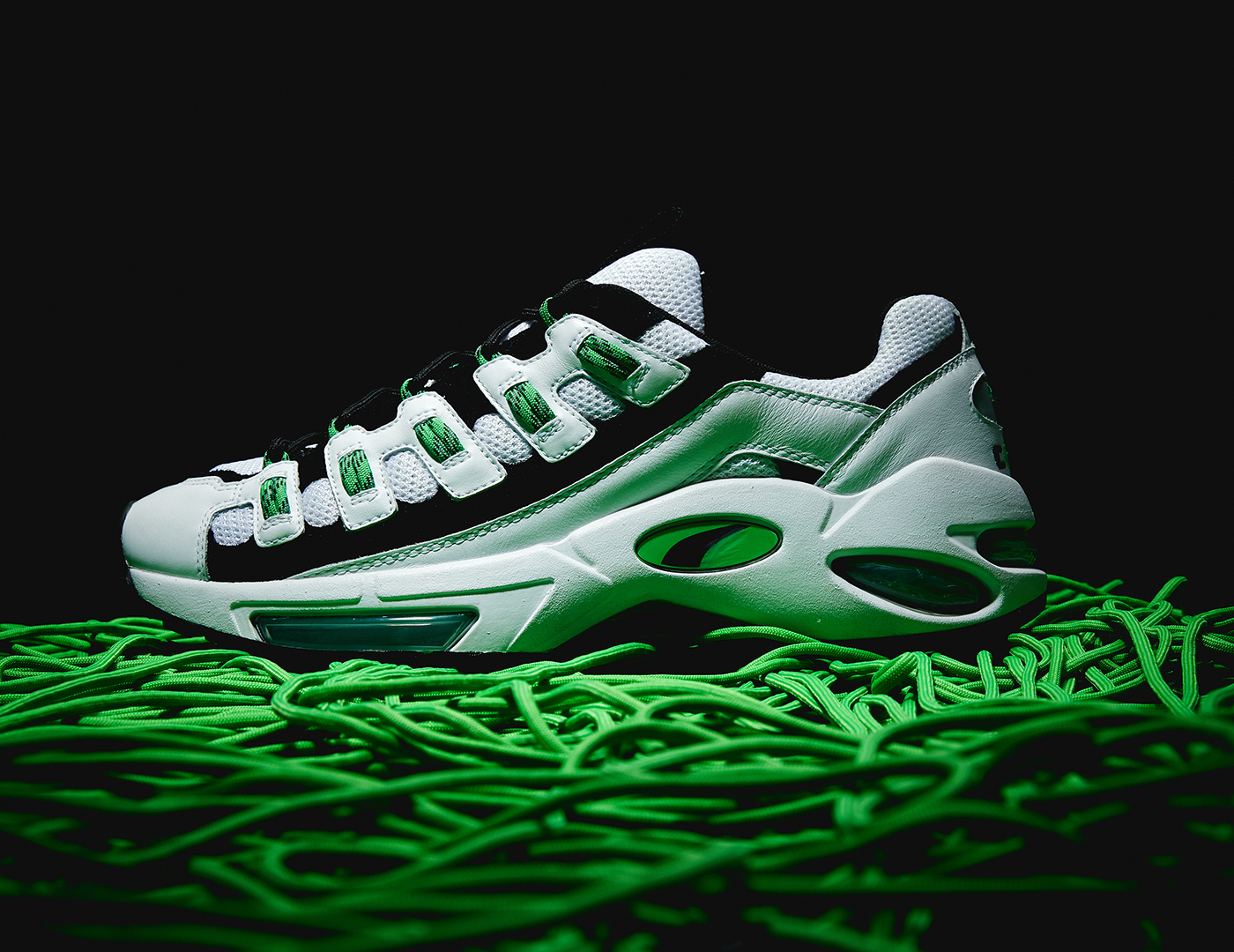
1998
PUMA CELL
In 1998, PUMA introduced the PUMA CELL technology, which was revolutionary. Its hexagonal cells provided the optimal shape for stable cushioning to move faster, stronger and better. 20 years later, with the 90s being back in fashion again, PUMA reissues the CELL Endura.
20 years later, PUMA reissues the CELL Endura. With a chunky silhouette and its green CELL Technology, the CELL Endura has stayed true to its OG glory, updated purely with new materials and new production techniques.
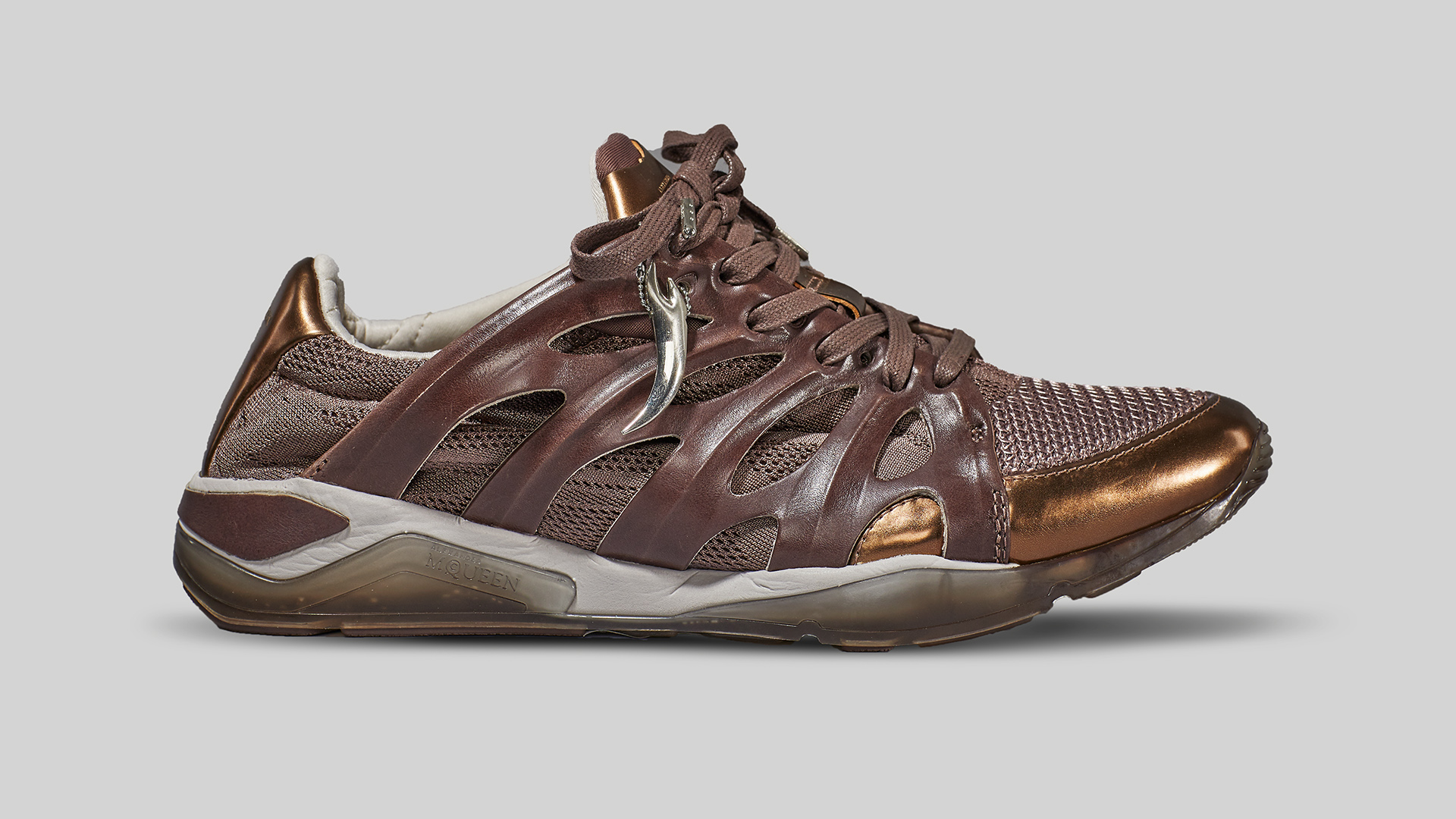
2005
WHEN SPORTS MEETS LUXURY
In 2005, PUMA and fashion designer Alexander McQueen surprised the fashion crowd with their collaborative partnership.
For Spring/Summer 2006, their first Men’s and Women’s footwear line hit the stores, offering a perfect combination of sports and luxury to the consumer.
Today, MCQUEEN x PUMA sneakers are real collector’s items and still serve as inspiration for contemporary Sportstyle silhouettes.

2009
THE WORLD’S FASTEST SHOE
This is truly the world’s fastest shoe: the right spike worn by Usain Bolt during his legendary World Record race in 2009.
On the blue lanes of Berlin’s Olympia Stadium, Bolt ran the 100 meters, smashing the world record in incredible 9.58 seconds.
In his unparalleled career he celebrated 147 victories, 11 world champion titles, eight Olympic gold medals and world records in the 100 and 200 meters.
This spike was custom-made following Bolt’s technical and design demands.
The shoe bears his signature phrase “Who faster?”, which he usually shouts after winning a race.
2004
THE FAMOUS ONE-PIECE JERSEY
Following up on their 2002 controversial sleeveless kits, the Cameroon National Team enters the pitch with an even more daring one-piece PUMA UniQT gear in 2004.
Helmut Fischer tells how PUMA reacted when the one-piece jersey was banned by FIFA after a couple of matches, threatening Cameroon’s qualification for the World Cup 2006.
POLE-POSITION FOR “SCHUMI”
Michael Schumacher is one of Formula One’s greatest legends: Schumacher is the only driver in history to have won seven world championships – five of them consecutively.
In 2006, during his time at Scuderia FERRARI, he started his collaboration with PUMA and helped in the development of our Formula One racing shoes.
Helmut Fischer remembers Schumacher as one of the greatest and most humble personalities he has ever met.

VOLVO OCEAN RACE
PUMA proves that challenges are meant to be taken as we set sail for the first time in 2008 by entering our own sailing yacht Il Mostro into one of the longest and most difficult sailing races in the world – the Volvo Ocean Race. The race, known as the “Everest of Sailing”, is a 37,000 nautical mile (68,524 km) around the world adventure and is one of the world’s toughest sporting events.

2009
THE FIRST CLIMANEUTRAL HEADQUARTER
After only two years of construction, PUMA opened its new company headquarters “PUMAVision Headquarters” in 2009. The building is the first climate-neutral headquarters of the sports industry, using only regenerative electricity. In addition to the office building, the new complex includes a factory store and a PUMA concept store- While the Brand Center offers a multimedia hall with a capacity of 1,200 seats along with numerous showrooms.
In 2018, PUMA extends it’s headquarters with a new office building and the connecting PUMA Bridge, becoming the work place of a total of 1,100 employees.
2006
FIRST PUMA TEAM TO WIN THE WORLD CUP
At the FIFA World Cup 2006 in Germany, PUMA is the dominant kit supplier with 12 teams showing the strongest brand visibility.
For the first time in company history, a PUMA sponsored national team to win the World Cup – Italy.
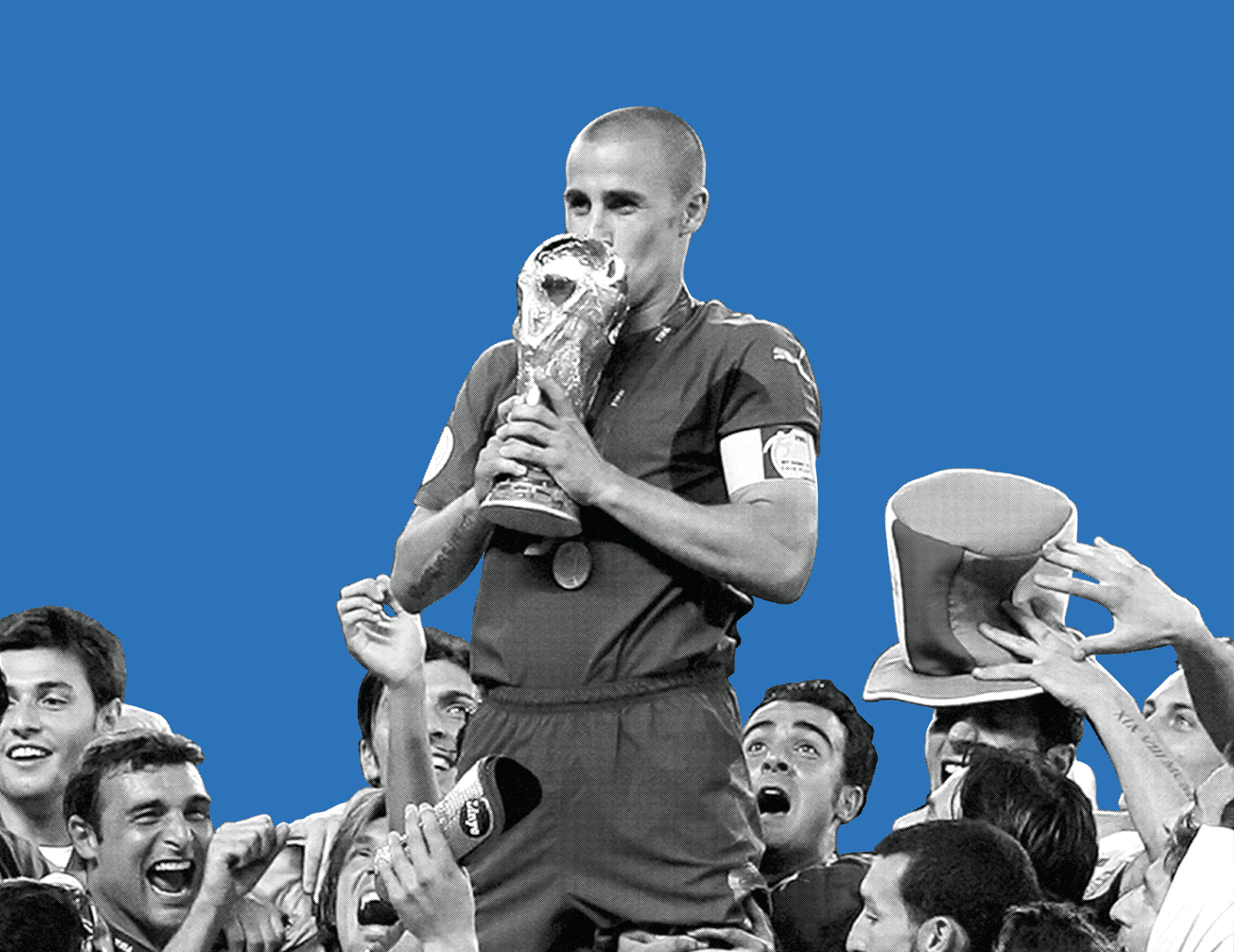
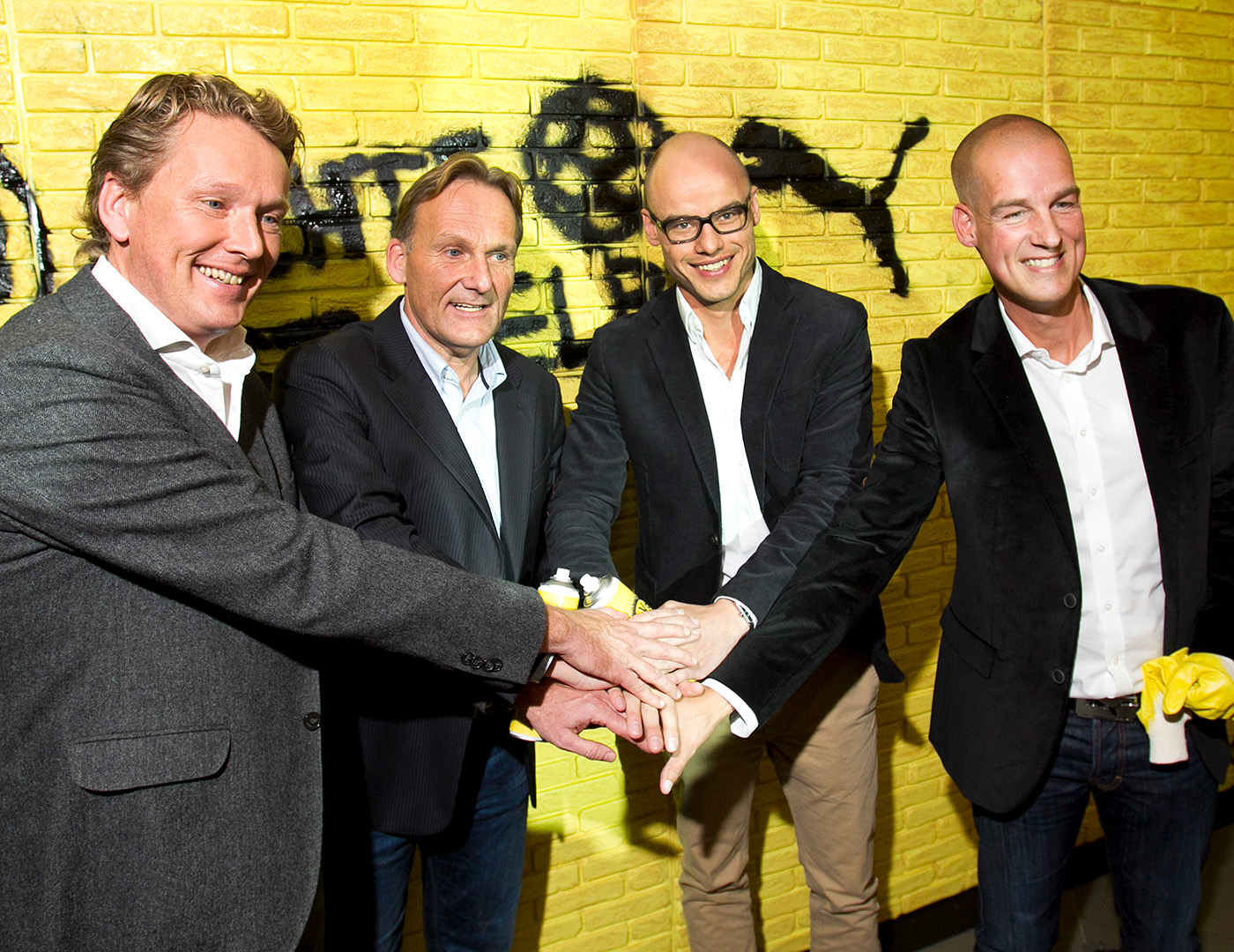
2011
PUMA SIGNS BVB
True to our roots in football, PUMA adds German Bundesliga Champion, Borussia Dortmund, to our football portfolio. BVB makes it to the Champions League final in the first season of the partnership, headed by their charismatic coach, PUMA partner Jürgen Klopp and with the talent of PUMA star Marco Reus.

PUMA ENTERS THE GOLF CATEGORY
PUMA made its mark on the golf world already in 2006, jumping into the category with stylish, performance-ready apparel, footwear and accessories that help golfers of all levels enjoy the game and play with confidence and style. In 2010, PUMA grows as a brand with the acquisition of Cobra Golf, a brand known for technology-rich, game-changing equipment.
Equipped by PUMA since 2009, Rickie Fowler has become one of the game’s most iconic stars. Along with his immense talent and drive on the golf course, Rickie is recognized for his bold style and Sunday orange, and beloved by fans for his genuine and engaging personality.
2017
RECORD YEAR FOR PUMA
2017 was a success story for PUMA – both in sports and business. For the first time in the company’s history we achieved sales of more than four billion euro, while PUMA teams and athletes celebrated major victories all over the globe.

2015
RIHANNA
Rihanna becomes PUMA’s global ambassador for Women’s Training and provides her input as the PUMA Women’s Creative Director, where she directly influences product collections. Her contribution includes the design and customization of classic PUMA styles, and the creation of new product lines.
Her style and work fully embrace PUMA’s Forever Faster mentality and spirit, while adding her own twist.
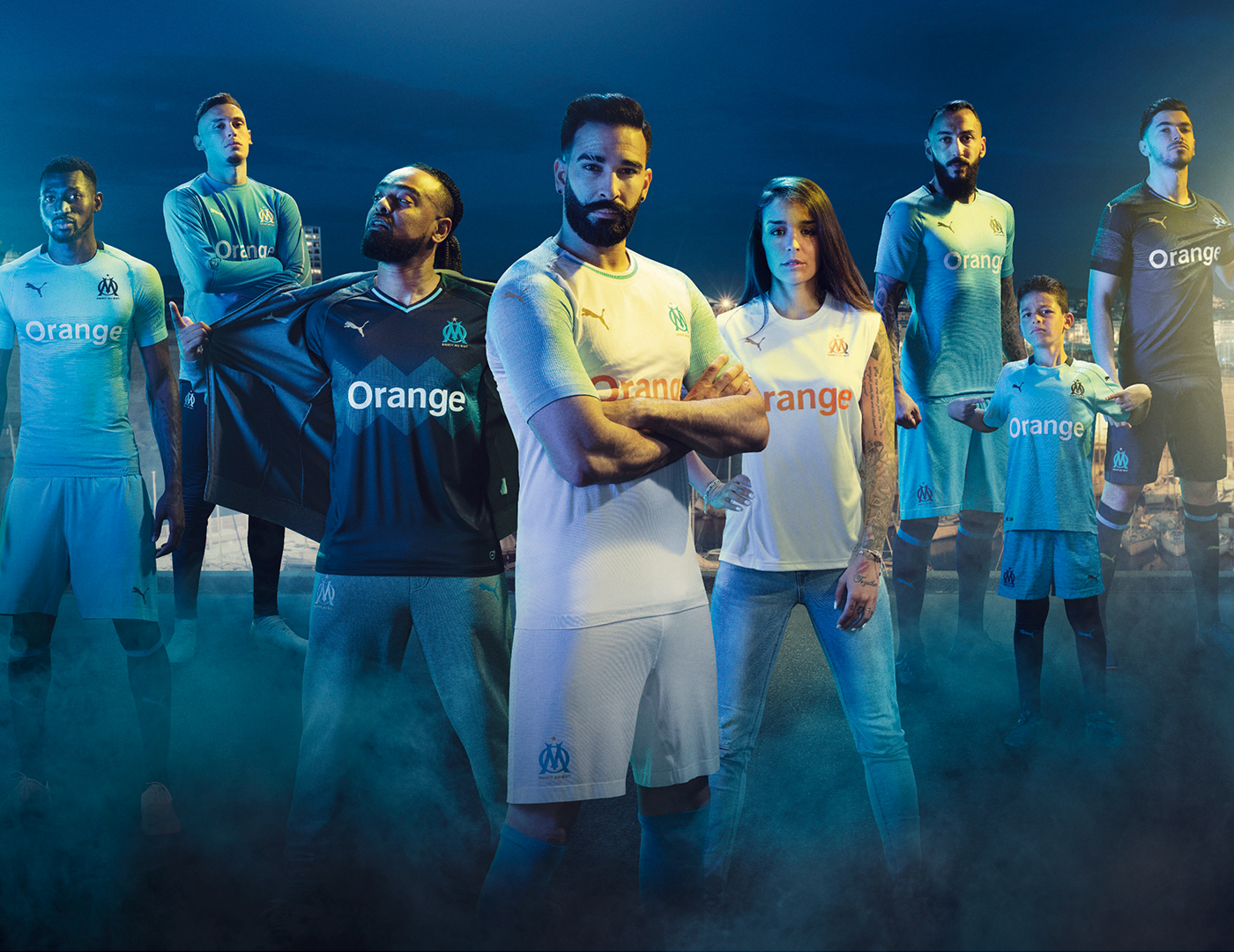
2018
WELCOME TO THE PUMA FAMILY
In 2018 PUMA took its game to new levels by signing new partnerships with exciting teams. European giants AC Milan, Olympique de Marseille, and Borussia Mönchengladbach joined the PUMA family.
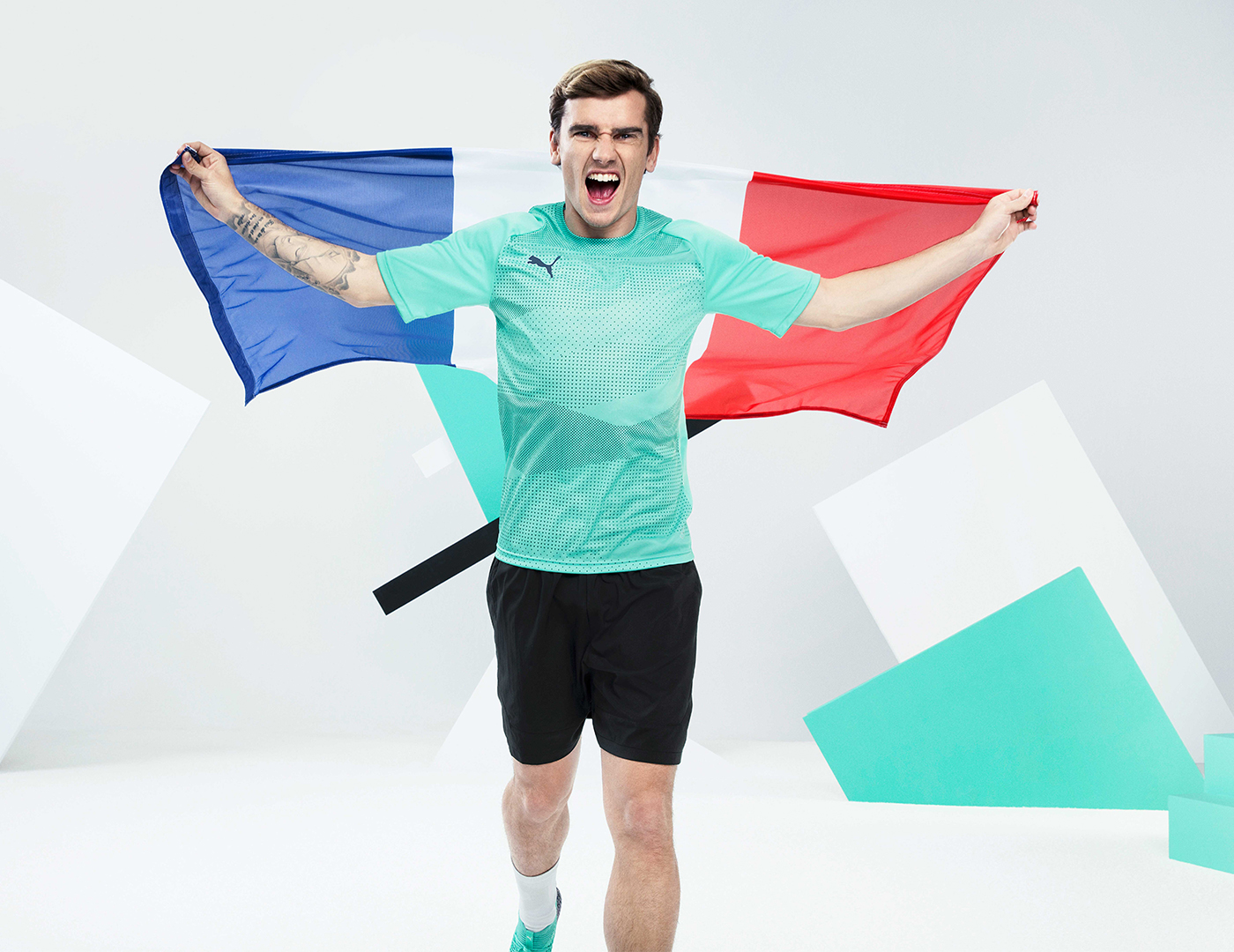
2018
ILLUMINATION THE GAME
In 2018, Antoine Griezmann was not only crowned world champion in Russia, but was also voted “Man of the Match” in the final, as he led France to victory with a 4-2 win against Croatia.
Together with PUMA’s latest signing Romelu Lukaku, he ended up among the top 3 strikers of the tournament.
2018
BACK TO THE HOOPS!
After a 20-year absence from the Basketball world, PUMA made a sensational return to this sport in 2018. With our rich heritage, our unique approach and strong stance in culture PUMA made headlines globally, excited the world of basketball, and disrupted the U.S. marketplace.
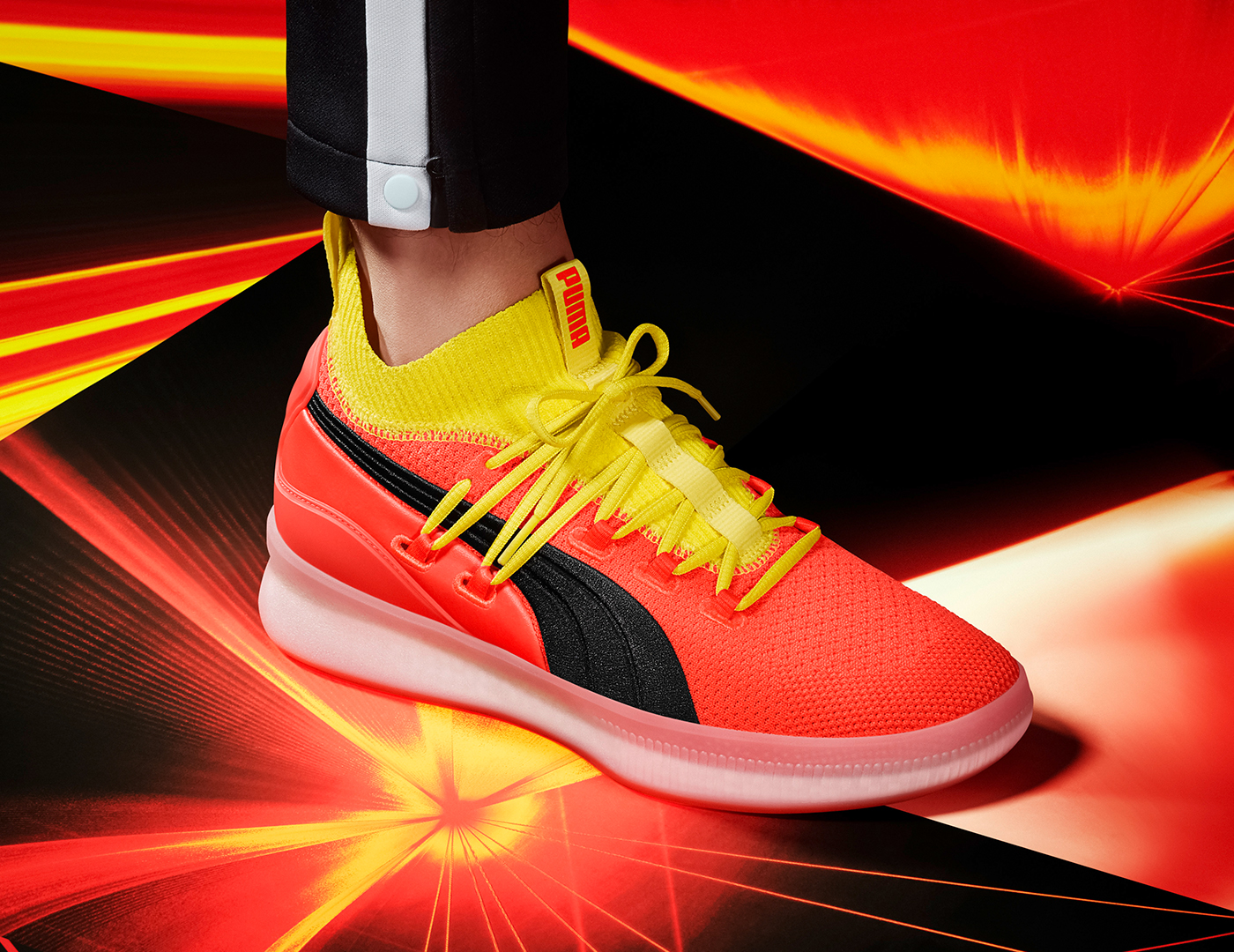
2018
MAKING OF THE PUMA ARCHIVE
Over 8,000 shoes and hundreds of pieces of apparel collected over the past seven decades, most of them by Helmut Fischer.
Approaching the 70th anniversary of the brand, the PUMA Archive was brought into being.
Last year, Helmut Fischer’s collection was transferred to what is to become PUMA’s first corporate archive – take a look behind the scenes.


